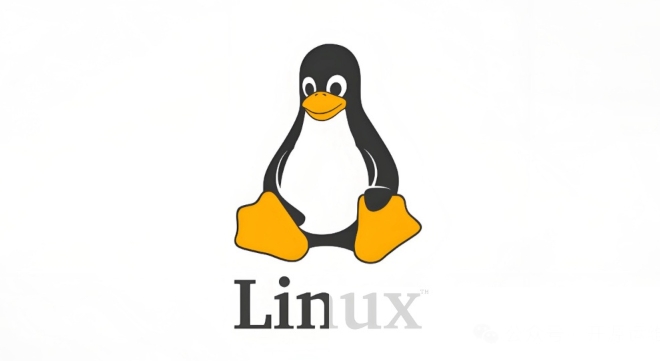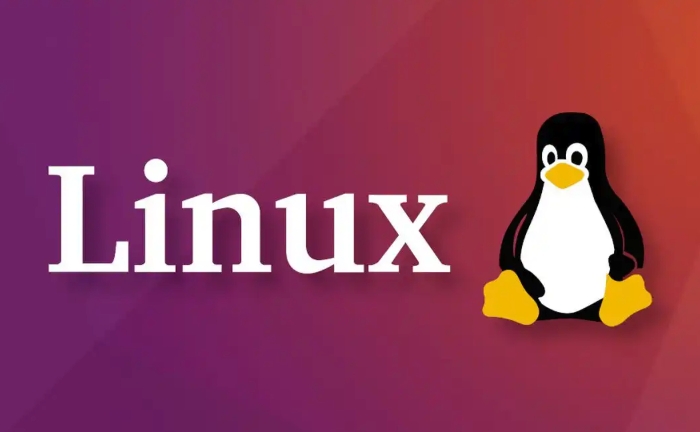What are the basic Linux commands every beginner must know?
Jul 15, 2025 am 01:40 AMMastering the basic Linux commands can speed up the use of the process, mainly including four categories: file and directory operations, viewing and editing file content, system information and process management, and permissions and users related. 1. File and directory operation commands include ls to view the directory contents, cd to switch the directory, pwd to display the current path, mkdir to create the directory, rm/rmdir to delete the file or directory, cp/mv to copy and move or rename the file. 2. To view and edit file content, you can use cat to output small file content, less pagination to view large files, head/tail to view the beginning or end of the file, nano/vim to edit the file, and echo to write strings to the file. 3. The system information and process management commands have top/htop to view resources, ps to find the process, kill/killall to end the process, df/du to view disk space, and free to view memory usage. 4. Permissions related to user commands such as chmod modify permissions, chown changes the user group to which it belongs, su/sudo switches the user, and whoami/id checks user information. Beginners can check while using it and gradually become familiar with these commonly used commands.

When you are new to Linux, mastering some basic commands can help you get started faster. These commands can not only help you check the system status, but also complete daily file operations and permission management.

File and directory operations: the most commonly used basic commands
This part of the command is used every day, especially when you troubleshoot problems on the server or deploy applications.

-
ls: List the directory contents, add the-lparameter to see detailed information (such as permissions, size, modification time, etc.). -
cd: Switch the directory, such ascd /home/userto enter the specified path. -
pwd: Shows the full path to the current directory. -
mkdir: Create a new directory, add-pto create multi-layer directories recursively. -
rmandrmdir: delete files or empty directories,rm -rcan recursively delete non-empty directories. -
cpandmv: copy and move files,mvcan also be used to rename them.
It is recommended that beginners be familiar with the basic usage of these commands first, and then gradually try operations with parameters.
Viewing and editing file content: Several practical methods
Sometimes you need to quickly view the contents of a file, or make simple edits. Here are some common ways:

-
cat: output file content to the terminal, suitable for small files. -
less: View content on pages, suitable for large files, pressqto exit. -
headandtail: View the beginning and end of the file respectively, and display 10 lines by default. -
nanoorvim: These two are commonly used text editors. It is easier to get started withnano,vimis more powerful but has a steep learning curve. -
echo: You can write strings to a file, such asecho "hello" > file.txt.
Note: It is best to back up a copy of the original file before editing the configuration file to avoid misoperation caused by service exceptions.
System information and process management: Understand the running status
When you want to see how the machine runs, or if a program gets stuck, these commands come in handy:
-
toporhtop: Check the system resource usage in real time,htopis more intuitive. -
ps: Check the currently running process, and it works better withgrep, such asps aux | grep nginx. -
killandkillall: end the process,kill PIDis to send a termination signal,kill -9 PIDis to force termination. -
dfanddu: View disk space,df -hdisplay is easier to read. -
free: Check memory usage, add-hparameter to better readability.
If you are operating on a remote server, remember not to kill the system key processes casually.
Permissions are related to users: secure operations cannot be ignored
Linux's permission mechanism is relatively strict, and understanding basic permission settings can avoid many problems:
-
chmod: Modify file permissions, such aschmod 755 script.shis set to executable. -
chown: Modify the user and group to which the file belongs, such aschown user:group file.txt. -
suandsudo: Switch users or temporarily execute commands as administrators. -
whoamiandid: View current user information.
Unreasonable permission settings may cause the script to be unable to run or the website to be accessed, so remember to test whether the function is normal after modifying the permissions.
Basically that's it. When you first learn, you don’t need to remember them all. Use them while checking them. After you become proficient, you will find that these commands are actually not complicated, but very practical.
The above is the detailed content of What are the basic Linux commands every beginner must know?. For more information, please follow other related articles on the PHP Chinese website!

Hot AI Tools

Undress AI Tool
Undress images for free

Undresser.AI Undress
AI-powered app for creating realistic nude photos

AI Clothes Remover
Online AI tool for removing clothes from photos.

Clothoff.io
AI clothes remover

Video Face Swap
Swap faces in any video effortlessly with our completely free AI face swap tool!

Hot Article

Hot Tools

Notepad++7.3.1
Easy-to-use and free code editor

SublimeText3 Chinese version
Chinese version, very easy to use

Zend Studio 13.0.1
Powerful PHP integrated development environment

Dreamweaver CS6
Visual web development tools

SublimeText3 Mac version
God-level code editing software (SublimeText3)

Hot Topics
 5 Best Open Source Mathematical Equation Editors for Linux
Jun 18, 2025 am 09:28 AM
5 Best Open Source Mathematical Equation Editors for Linux
Jun 18, 2025 am 09:28 AM
Are you looking for good software to write mathematical equations? If so, this article provides the top 5 equation editors that you can easily install on your favorite Linux distribution.In addition to being compatible with different types of mathema
 SCP Linux Command – Securely Transfer Files in Linux
Jun 20, 2025 am 09:16 AM
SCP Linux Command – Securely Transfer Files in Linux
Jun 20, 2025 am 09:16 AM
Linux administrators should be familiar with the command-line environment. Since GUI (Graphical User Interface) mode in Linux servers is not commonly installed.SSH may be the most popular protocol to enable Linux administrators to manage the servers
 What is a PPA and how do I add one to Ubuntu?
Jun 18, 2025 am 12:21 AM
What is a PPA and how do I add one to Ubuntu?
Jun 18, 2025 am 12:21 AM
PPA is an important tool for Ubuntu users to expand their software sources. 1. When searching for PPA, you should visit Launchpad.net, confirm the official PPA in the project official website or document, and read the description and user comments to ensure its security and maintenance status; 2. Add PPA to use the terminal command sudoadd-apt-repositoryppa:/, and then run sudoaptupdate to update the package list; 3. Manage PPAs to view the added list through the grep command, use the --remove parameter to remove or manually delete the .list file to avoid problems caused by incompatibility or stopping updates; 4. Use PPA to weigh the necessity and prioritize the situations that the official does not provide or require a new version of the software.
 Gogo - Create Shortcuts to Directory Paths in Linux
Jun 19, 2025 am 10:41 AM
Gogo - Create Shortcuts to Directory Paths in Linux
Jun 19, 2025 am 10:41 AM
Gogo is a remarkable tool to bookmark directories inside your Linux shell. It helps you create shortcuts for long and complex paths in Linux. This way, you no longer need to type or memorize lengthy paths on Linux.For example, if there's a directory
 Install LXC (Linux Containers) in RHEL, Rocky & AlmaLinux
Jul 05, 2025 am 09:25 AM
Install LXC (Linux Containers) in RHEL, Rocky & AlmaLinux
Jul 05, 2025 am 09:25 AM
LXD is described as the next-generation container and virtual machine manager that offers an immersive for Linux systems running inside containers or as virtual machines. It provides images for an inordinate number of Linux distributions with support
 How to create a file of a specific size for testing?
Jun 17, 2025 am 09:23 AM
How to create a file of a specific size for testing?
Jun 17, 2025 am 09:23 AM
How to quickly generate test files of a specified size? It can be achieved using command line tools or graphical software. On Windows, you can use fsutilfilecreatenew file name size to generate a file with a specified byte; macOS/Linux can use ddif=/dev/zeroof=filebs=1Mcount=100 to generate real data files, or use truncate-s100M files to quickly create sparse files. If you are not familiar with the command line, you can choose FSUtilGUI, DummyFileGenerator and other tool software. Notes include: pay attention to file system limitations (such as FAT32 file size upper limit), avoid overwriting existing files, and some programs may
 NVM - Install and Manage Multiple Node.js Versions in Linux
Jun 19, 2025 am 09:09 AM
NVM - Install and Manage Multiple Node.js Versions in Linux
Jun 19, 2025 am 09:09 AM
Node Version Manager (NVM) is a simple bash script that helps manage multiple Node.js versions on your Linux system. It enables you to install various Node.js versions, view available versions for installation, and check already installed versions.NV
 How to install Linux alongside Windows (dual boot)?
Jun 18, 2025 am 12:19 AM
How to install Linux alongside Windows (dual boot)?
Jun 18, 2025 am 12:19 AM
The key to installing dual systems in Linux and Windows is partitioning and boot settings. 1. Preparation includes backing up data and compressing existing partitions to make space; 2. Use Ventoy or Rufus to make Linux boot USB disk, recommend Ubuntu; 3. Select "Coexist with other systems" or manually partition during installation (/at least 20GB, /home remaining space, swap optional); 4. Check the installation of third-party drivers to avoid hardware problems; 5. If you do not enter the Grub boot menu after installation, you can use boot-repair to repair the boot or adjust the BIOS startup sequence. As long as the steps are clear and the operation is done properly, the whole process is not complicated.






